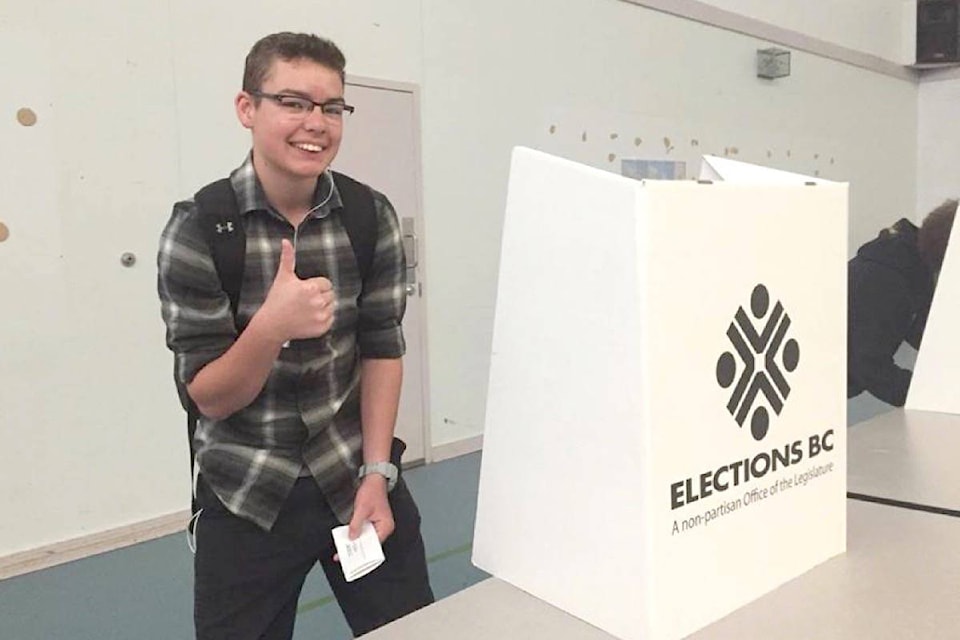Local students, and those across the province, voted quite differently from their parents and grandparents in a mock vote held on May 8.
With 50 per cent of the vote in Parksville-Qualicum, the winner was Glenn Sollitt of the B.C. Green Party.
The rest of the vote broke down to 25 per cent for Michelle Stilwell of the B.C. Liberal Party (who will be returning as MLA), 21 per cent for Sue Powell of the B.C. NDP and 2.7 per cent for Terry Hand of the B.C. Refederation Party.
Provincially, the legislature would also look very different by the student vote, with the NDP taking 60 seats and 39 per cent of the vote.
Next was the Greens with 14 seats and 28 per cent, followed by the Liberals with 12 seats and 25.5 per cent.
Notably, an independent also won one seat.
Schools from across the riding participated in the mock vote, from elementary schools such as Qualicum Beach Elementary, to high schools including Ballenas, which returned the most ballots.
There, 52 per cent of the vote was for the Green Party, 23.7 per cent for the NDP and 21.6 for the Liberals.
Humanities teacher Olivia Hill, who helped to organize the vote, interpreted the results as a call for change, adding that youth aren’t voting with the same world outlook that their parents are.
Youth aren’t thinking about which party is going to raise taxes, she said.
“They are voting largely on who is going to protect the environment and who is going to provide for the marginalized, disadvantaged groups in society,” she said.
Other key issues for them, especially as they near working or graduating age, are increases in minimum wage and the cost of education.
The vote is run by CIVIX, a civic education charity in partnership with Elections B.C. and support from the Government of Canada, according to the Student Vote website.
Hill said learning materials provided by the program are non-partisan, leaving all discussions of political party platforms to teachers and students.
“We do our best not to (influence students),” said Hill, adding that the real goal of the program is educating youth on the election process, how the political system works, and ultimately increasing the number of voters.
“I think it’s great for citizenship education,” said Hill. “We try to educate the students when they are in high school about how our first-past-the-post system works and why the results of the seats in the legislature don’t always reflect the popular vote.” Most classes, she said, introduce the party platforms and then have students do their own research. Ballenas school also had a candidates’ meeting, with the Liberal, Green and NDP candidates taking questions from students.
“There are statistics that support that, the more students who vote in a student vote at school, the more likely they are to vote once they turn 18,” said Hill. “And there is also evidence to suggest that the more students that participate in a student vote, the more likely their families are to vote as well, because the conversation extends at home.”
